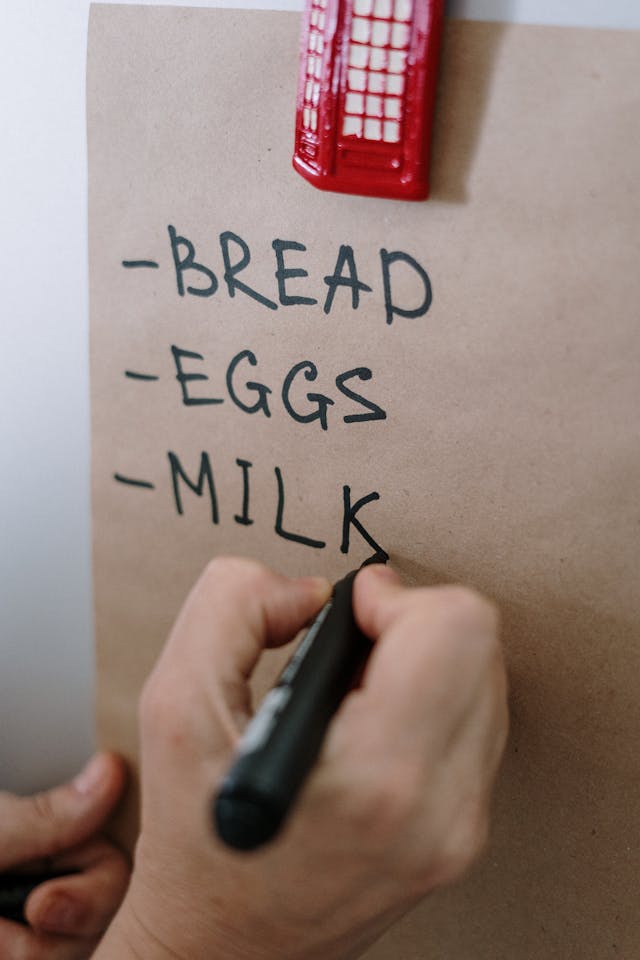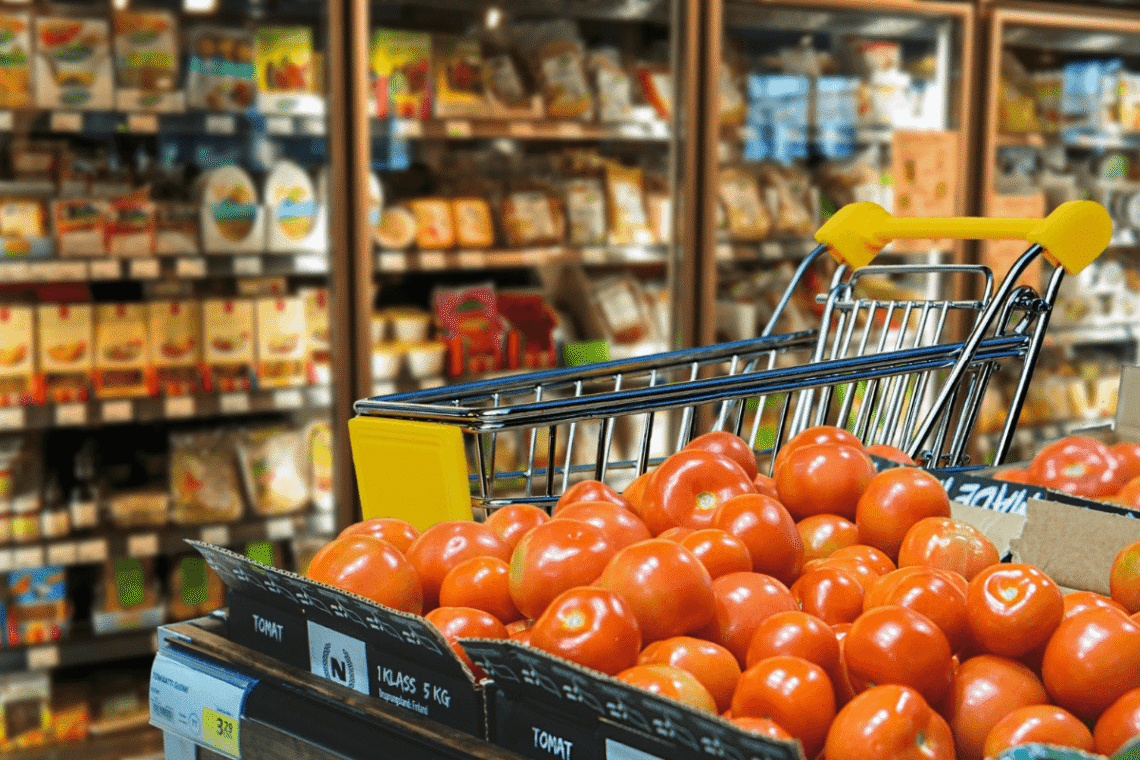Here’s a fun (and slightly alarming) fact: Most people visit the grocery store five times a month but still feel like there’s “nothing to eat.” Even more surprisingly, nearly 30% of all purchased food ends up wasted, according to the USDA.
We don’t have a grocery shortage. We have a grocery strategy problem.
The key to effortless meals at home isn’t having more food—it’s knowing how to shop smarter. This guide is your map to mastering smart grocery shopping for fast, fresh cooking at home, so that dinner doesn’t become a nightly stressor.
No more cart full of random ingredients and no clue what to do with them. Let’s dive into how you can shop with purpose, cook with ease, and eat well—even on your busiest days.
Why Your Grocery List Feels Like Chaos
We’ve all been there—standing in aisle 5, wondering why we came in for “a few things” and ended up with kale, frozen waffles, and five jars of salsa. The problem isn’t the store. It’s that we shop reactively, not intentionally.

Without a list or plan, we fall for clever packaging, buy too many perishable items, and then feel overwhelmed by decision fatigue. Healthy food choices get buried under impulse buys, and meal prep becomes more complicated than it should be.
Smart shopping isn’t about restrictions. It’s about clarity and flexibility—knowing what works for you, your schedule, and your energy levels during the week.
Build a Flexible Meal Plan, Not a Rigid Menu
You don’t need to plan every bite of every day. That’s a recipe for burnout. Instead, use meal planning strategies that create structure without locking you into rigid routines.
Try this format:
- Pick 2–3 proteins (chicken, tofu, beans)
- Choose 3–4 vegetables (that work across recipes)
- Add 2 grains or starches (rice, quinoa, sweet potatoes)
- Keep 1–2 sauces or spice mixes for variety
This creates a mix-and-match framework that keeps your meals interesting and efficient. Think of it like building blocks instead of blueprints.
Bonus tip: plan “assembly” meals like grain bowls, tacos, or stir-fries. They’re fast, fresh, and forgiving.
Grocery List by Zones (and Why It Saves Your Brain)
Smart grocery shopping begins with how you write your list. Stop listing random ingredients in one long column. Instead, break your list into store zones like this:
- Produce: spinach, bell peppers, berries
- Proteins: eggs, chickpeas, chicken thighs
- Grains & Pasta: brown rice, soba noodles, oats
- Fridge Essentials: Greek yogurt, almond milk, shredded cheese
- Pantry Staples: canned tomatoes, olive oil, spices
- Freezer: mixed veggies, edamame, frozen naan
This setup mirrors how grocery stores are laid out—helping you move faster, think less, and avoid impulse zones like the snack aisle. Your brain (and budget) will thank you.
Don’t Shop Hungry—Shop “Primed”
You’ve heard “don’t shop hungry” before—but let’s take it a step further. Don’t shop on autopilot either.
Go to the store with a mental or physical list, a light snack in your belly, and a general game plan.
Also:
- Avoid end-cap “deals” you didn’t plan for
- Skip new items unless you know how to use them
- Check unit prices, not just total price
When you’re primed, you naturally make better food choices because you’re leading with logic—not low blood sugar.
Quick-Fix Staples That Save You Later
Whether you’re new to meal prep or just trying to simplify your life, having the right staples on hand can save any meal from disaster.
Here are some pantry MVPs to grab on repeat:
- Canned beans: protein in seconds
- Pre-washed greens: salads or stir-fries, done
- Jarred curry paste: instant flavor upgrade
- Lentils: cook in 20 minutes, fuel you for days
- Frozen peas or corn: emergency veggies
- Eggs: nature’s fastest dinner
These grocery shopping tips for beginners are all about one thing: options. A stocked, smart pantry is your secret weapon when time (or motivation) is low.
Buy Versatile, Not Viral
Social media loves a trendy ingredient—sea moss gel, beet powder, that one sauce from TikTok that’s sold out everywhere. But smart grocery shopping isn’t about going viral—it’s about going versatile.
Ask these two questions before adding something new to your cart:
- Will I use this in more than one meal?
- Will I actually eat it—or will it die a slow death in my fridge?
Stick to ingredients that work across meals:
- Greek yogurt for breakfast, dressings, and marinades
- Avocados for toast, bowls, and smoothies
- Roasted veggies that become tacos, salads, or sides
How to grocery shop smarter? Stick with food that shows up for you, again and again.
Clean Eating Doesn’t Mean Complicated
One of the biggest myths about eating well is that it requires hours in the kitchen and a full spice rack alphabetized by origin. Not true.
Clean eating can be as simple as:
- One grain
- One vegetable
- One protein
- One sauce
Boom. Done. Think stir-fries, Buddha bowls, tacos, and baked sheet meals.
These simple healthy meals are endlessly customizable and take 30 minutes or less. And guess what? The ingredients are usually already in your smart grocery cart.
Organize Your Fridge Like a Meal-Prep Pro
Want to cook faster? Store smarter.
Tips to keep your ingredients visible and usable:
- Put prepped food at eye level (not behind that takeout box)
- Label containers with use-by dates
- Store greens with a paper towel to keep them from going soggy
- Use bins to group meal components together
This reduces decision fatigue and lets you grab, cook, and eat your fast fresh meals without searching through mystery drawers or throwing out wilted herbs.
Save Time With a Grocery Routine
Not everything has to be spontaneous. Having a weekly grocery rhythm takes the guesswork out of shopping.
Try:
- Main haul day: For your big list and weekly basics
- Mini run day: For midweek refills (milk, greens, fruit)
This balance keeps things fresh but avoids burnout. You’ll spend less time overall at the store—and reduce food waste because you’re only buying what you can actually use.
If you’re looking to streamline your time, quick grocery runs with purpose are way more effective than one huge, exhausting trip with no plan.
Use Tech Without Getting Distracted
Your phone can either be your secret weapon or your biggest distraction.
Use meal planning tools like:
- AnyList or Paprika for organizing ingredients
- Google Keep for shared family lists
- Plan to Eat for recipe import and calendar syncing
These tools help you remember what you actually need—so you don’t buy your fourth bottle of soy sauce.
Keep it simple, set up once, and let tech reduce your mental load—not increase it.
Smart Grocery Shopping for Fast, Fresh Cooking at Home
At the end of the day, cooking well isn’t about being a gourmet chef—it’s about setting yourself up to win.
Smart grocery shopping for fast, fresh cooking at home means
- Planning just enough to stay flexible
- Stocking ingredients that love you back
- Saying no to kitchen chaos and yes to meal prep that actually works
You don’t need more food. You need more clarity. Whether you’re a busy parent, a working professional, or just tired of wasting money on food that goes uneaten, remember: smart grocery shopping for fast, fresh cooking at home isn’t a talent. It’s a habit—and one you can start with your very next list.


